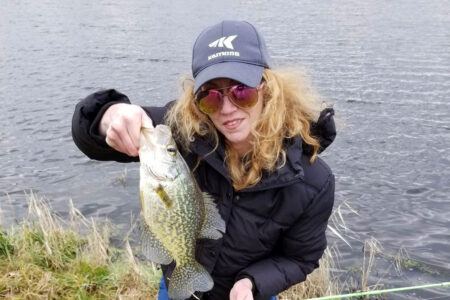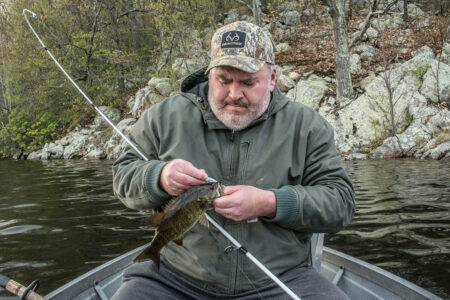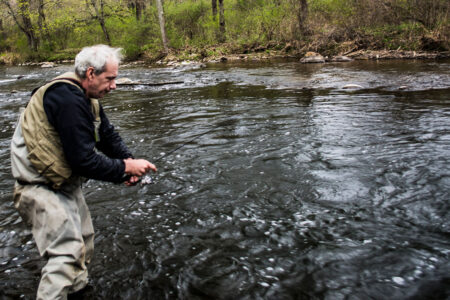
A sterile offspring produced by crossing a male brook trout with a female brown trout, the tiger trout honors its namesake in both appearance and personality.
Tiger trout (Salmo trutta/Salvelinus fontialis), is a sterile fish that is a cross between a female brown trout, and male Eastern brook trout. This is exclusively a hatchery created, and reared fish. Eggs are striped from a ripe female brown trout during spawning season in the fall, and milt is removed from a mature male Eastern brook trout at the same time, and mixed usually in a large mixing bowl to get this weird looking creature.
After their Frankenstein-like creation, the life history similarities of brook and brown trout stop, because they simply cannot produce any offspring.
Tiger trout get their names because of how they look – they have “tiger-like” stripes along their sides, and because they also have an aggressive, nasty attitude with teeth, like their furry name-sake.
The coloration of a tiger trout is a greenish-yellow to brown, with many color shades in-between, with darker patches on their sides. I have seen variances that look something like a tricky corn maze, but on the side of a fish’s body. These fish can grow to lengths of approximately 18 to 20 inches if they have enough forage food available to help the process.
While snorkeling with many trout and salmon species over the years, I have seen, and photographed fish that sometimes look more like their dad with a stockier body of a brook trout, and some that are slenderer and more elongated in length like that of their mom brown trout, and every combination in-between.
Another abnormality we have seen is the tiger trout’s dorsal fins frequently appear to be disformed, and not like that of either the brook, or brown trout. I am not sure if this is a by-product of the cross-breeding process, but it does appear to be pretty widespread in the fish I have observed.
This species has been widely introduced throughout the USA. The benefit is this species will feed on many invasive smaller bait-like fish species which native brook and brown trout do not eat.
Where these are hatchery-created fish, there are no further life history stages of this animal found in the wild. Since these fish cannot have their own young, they are a put and take fishery only. In some locals you can keep them. In others, they are strictly catch and release only.
Because these are a hybrid fish, half brook trout, and half brown trout, they can survive in a wider range of habitat types throughout North America—unlike brook trout that require cold, clear, well-aerated streams for survival, and the brown trout that is also introduced to the Northeast—and can survive in much warmer, less oxygenated waters.
While tiger trout will be caught in the same cold-water habitat as a brook trout. They do in fact survive well at slightly lower elevations than where you would typically not find a brook trout.
Catching tiger trout is a challenge, because they only feed on other fish, not insects like the brook trout. So fly fishing with a nymph would be a waste of time. However, this fish will strike at flies, spinners, live bait, and spoons. If you have a fake minnow-like lure in your goodie bag, that would be a very good option for trying to hook a tiger trout.
Editor’s Note: The tiger trout can be produced in the wild, and specimens have been found where reproducing wild stocks of both brook and brown trout coexist, but they are quite rare to naturally-occur. Further, just like hatchery-reared specimens, wildly-produced tigers remain sterile. – Toby Lapinski





